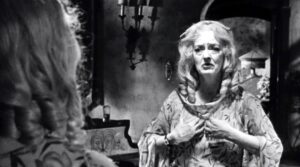Share this Collection
1 Citation in this Annotation:
Annotated by:
Paul Grieguszies on Caliban and the Witch
30 May, 2023
What I take from Silvia Federici’s Caliban and the Witch is how the condemnation of mostly lower-class women for witchcraft was used as a disciplinary instrument to silence and domesticate them. Federici’s connection with Marxist and Foucauldian theories are important because they fill out the missing gaps that her male predecessors left out. But for me, annotating Federici’s captivating text is absolutely not to correct her. Her writing has simply inspired me to think of these methods of discipline in later chronological contexts.
Witches never existed to begin with; the existence of witches comes down to women being identified, labelled, and treated as such, because of their otherness. This threat silenced many women out of fear of being condemned and this threat continues. To me, this stigma has unfortunately not only stood the test of time but evolved, resulting in severe circumstances for women even after witch burning trials stopped.
Many don’t fully acknowledge this evolution, as well as many other modern forms of slavery, because many like to pretend it no longer exists in a capitalist driven economy, where we compensate labour with money. Yet forced labour still exists, and as Federici explains in Caliban, sexist forms of slavery are specifically implemented on women, such as forced marriage and exploitative forms of domestic servitude.
Looking back to the 20th century, I came across one particular method invented by the Portuguese neurologist António Egas Moniz, who won the Nobel Peace Prize in 1949 for originating the  surgery of lobotomy. This procedure severs the connections in the brain, rendering the nature of the patient to a childlike state, who is left emotionally blunted and restricted in their intellectual range. The majority of these patients were women, notable cases being the actor and communist Frances Farmer and Rosemary Kennedy, the sister of JFK. Today, Moniz’ reputation is controversial, especially when connecting his research in medicine with his writing such as A Vida Sexual (The Sexual Life) which makes the clear differentiation of the sexes, I quote: “man is essentially sexual, woman is essentially mother.” In short, we can see his methods being strategically aimed at women to behave in a certain way towards men.
surgery of lobotomy. This procedure severs the connections in the brain, rendering the nature of the patient to a childlike state, who is left emotionally blunted and restricted in their intellectual range. The majority of these patients were women, notable cases being the actor and communist Frances Farmer and Rosemary Kennedy, the sister of JFK. Today, Moniz’ reputation is controversial, especially when connecting his research in medicine with his writing such as A Vida Sexual (The Sexual Life) which makes the clear differentiation of the sexes, I quote: “man is essentially sexual, woman is essentially mother.” In short, we can see his methods being strategically aimed at women to behave in a certain way towards men.
While the witch trials were ultimately a threat to women of the lower class, in the 20th century I see this approach directed also at those who pose the biggest rivalry to white men of the upper class: prominent women, mostly white and wealthy, who take advantage of their privilege.
 The Grande Dame Guignol, a version of the hag or witch, became a popular trope for older women who refuse to accept they’re ageing as they slowly degenerate into madness, becoming defensive towards anyone who wants them to face reality. Although this “Feminine Grotesque” persona was only acted on screen, it ultimately became connected with the actresses off screen who played their characters in the so-called “hagsploitation horror” genre. The most well-known examples are Bette Davis in “Whatever Happened to Baby Jane?” and Gloria Swanson in “Sunset Boulevard”, where the figures Baby Jane Hudson and Norma Desmond have become inseparable from the female actors who played them. There is no male version of the Grand Dame Guignol, the hag is always female. Later and more recent iterations, such as Glenn Close in “Fatal Attraction,” prove that this cliché of the crazy middle-aged woman still exists.
The Grande Dame Guignol, a version of the hag or witch, became a popular trope for older women who refuse to accept they’re ageing as they slowly degenerate into madness, becoming defensive towards anyone who wants them to face reality. Although this “Feminine Grotesque” persona was only acted on screen, it ultimately became connected with the actresses off screen who played their characters in the so-called “hagsploitation horror” genre. The most well-known examples are Bette Davis in “Whatever Happened to Baby Jane?” and Gloria Swanson in “Sunset Boulevard”, where the figures Baby Jane Hudson and Norma Desmond have become inseparable from the female actors who played them. There is no male version of the Grand Dame Guignol, the hag is always female. Later and more recent iterations, such as Glenn Close in “Fatal Attraction,” prove that this cliché of the crazy middle-aged woman still exists.
This trope doesn’t necessarily harm women physically as the method of lobotomy had done, which had reached its peak in the early 1940s but was slowly abandoned two decades later. But the application of this label “the mentally unstable woman” damaged reputations, making them less likely to be taken seriously, hence hemming in their power of being potentially threatening to men in power. In other words, making them look crazy instead of making them crazy.
To contextualize the “witch’s hut”, the place in which these protagonists are condemned: for me, somehow, these houses have a physiognomic connection to the characters who inhabit them, being big, intimidating, old, forgotten, and ready to be evicted. This metaphorical relationship shifts the location of destruction from the witch from being executed (burned) in a public space to the woman being lobotomized in a semi-public institution, finally to isolation and entrapment in a decaying house, where the domestic sphere becomes a space of horror, forgottenness, eventually to be sold or demolished.
 Recent debates in feminist circles make us question these negative connotations surrounding the witch, whether they are in fact legitimate. Who is the actual villain, if not women? The Bullingerplatz in Zürich, which was named after the Swiss Reformer Heinrich Bullinger was (unofficially) renamed Anna-Göldi-Platz by small socialist groups on the 1st of May 2021. Anna Göldi was the last (Swiss) woman executed for witchcraft in Europe, thus turning the tables of history and honouring her lost legacy. At the same time, with this name change they made certain historical facts behind historic male figures more visible. As many don’t know, amongst his famous texts and actions Bullinger also wrote Wider die Schwarzen Künste (Against the Black Arts), in which he advocated the death penalty for “witches”. The heroes of yesterday can be the villains of tomorrow if we allow this to happen today.
Recent debates in feminist circles make us question these negative connotations surrounding the witch, whether they are in fact legitimate. Who is the actual villain, if not women? The Bullingerplatz in Zürich, which was named after the Swiss Reformer Heinrich Bullinger was (unofficially) renamed Anna-Göldi-Platz by small socialist groups on the 1st of May 2021. Anna Göldi was the last (Swiss) woman executed for witchcraft in Europe, thus turning the tables of history and honouring her lost legacy. At the same time, with this name change they made certain historical facts behind historic male figures more visible. As many don’t know, amongst his famous texts and actions Bullinger also wrote Wider die Schwarzen Künste (Against the Black Arts), in which he advocated the death penalty for “witches”. The heroes of yesterday can be the villains of tomorrow if we allow this to happen today.
In a workshop organized by the talented group behind Women Writing Architecture, we discussed whether writing can be a form of activism. To me, the previous example is a form of writing or rather a re-writing towards activism, because it makes us read places like people, and by introducing a lost figure, it can potentially change our perception of how we treat women.
Rewriting could happen in many different ways, also taking a more economic and representative standpoint: As of today, the US Dollar bills only depict men, for example former presidents George Washington, Abraham Lincoln and Benjamin Franklin. Since 2016, there have been plans to add the portrait of American abolitionist and social activist Harriet Tubman in this group, by using it on the front of the twenty-dollar bill. This would entail removing the portrait of President Andrew Jackson, a slaveholder, to the rear of the bill, thus re-writing history and reframing how we perceive the political figures who have influenced it.
The words “witch” and “bitch” go hand in hand in the ways that they have been re-evaluated and given more positive connotations, without forgetting their previous reputation as a sexist slur. This re-writing of the w/bitch keeps in mind that women are still treated differently than men, but more than ever compliment the bravery of risking being one